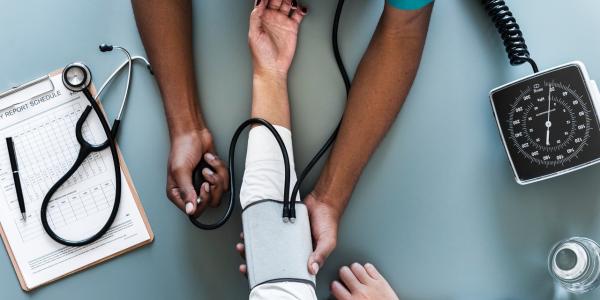Immediate & Long Term Health Risks

Drinking over the recommended limits can have immediate as well as long term health risks.
Immediate Health Risks
Drinking over the recommended limits, including binge drinking, has immediate effects that increase the risk of many harmful health conditions.
-
Unintentional injuries and fatalities, including traffic injuries, falls, drowning, burns, and unintentional firearms injuries (Gmel, et al., 2006) (World Health Organization, 2009). Being drunk simply makes it more likely that these things could occur, as coordination, reasoning, and impulse control can all be impaired by drinking. Alcohol is reported as a factor in 40% of motor vehicle fatalities, 47% of homicides, 29% of suicides, and 39% of other unintentional injury death (National Institute on Alcohol Abuse and Alcoholism, 2006).
On top of that, it actually doesn’t even take that much alcohol to put you at risk. For example, something as seemingly simple as steering a car in traffic can be impaired by blood alcohol concentrations as low as 0.02 percent (Alcohol Screening)! - Violence. According to the Bureau of Justice Statistics (2010), alcohol was a factor in between 19% and 37% of all violent crimes committed from 1997 to 2008. Additional studies have found that between 30% and 40% of men and between 27% to 34% of women who perpetrated violence against their partner were drinking at the time of the incident (National Institute on Alcohol Abuse and Alcoholism). Alcohol was also found to be a leading factor in child abuse and neglect cases as well (Freisthler, 2011).
- Risky sexual behaviors, including unprotected sex, sex with multiple partners, and increased risk of sexual assault (George, et al., 2014).
- Birth defects, miscarriage, and stillbirth for pregnant women. Drinking during pregnancy can cause brain damage and other serious problems in the baby. Because it is not yet known whether any amount of alcohol is safe for a developing baby, women who are pregnant or may become pregnant should not drink.
Long Term Health Risks
Some health problems develop gradually, with symptoms only becoming evident after years of heavy drinking.
These include, but are not limited to:
Liver disease. Drink enough alcohol and you will likely damage your liver. According to the National Institute on Alcohol Use Disorder and Alcoholism (2015), 78,529 deaths related to liver disease occurred in 2015, 47% of those involving alcohol. Among males, 49,695 liver disease deaths occurred and 49.5% involved alcohol. Among females, 28,834 liver disease deaths occurred and 43.5% involved alcohol.
- Some drinkers develop alcohol-related hepatitis, which is an inflammation of the liver that can cause jaundice (abnormal yellowing of the skin, eyes, and urine), fever, and abdominal pain, and potentially death if the drinking continues.
- About 10 to 20% of heavy drinkers develop alcoholic cirrhosis, which is scarring of the liver and is not reversible. It can lead to death, but a drinker’s chance of survival improves if the drinking stops. Alcohol-related cirrhosis is among the 15 leading causes of death in the United States (Heron, 2007).
To learn more about alcohol and liver disease, check out The Drinkaware Trust’s factsheet.
Heart disease. Light to moderate drinking (one or two drinks a few times a week) has been shown to have some beneficial impact on the heart, reducing the risk of heart disease in men over 40 and post-menopausal women. This kind of news gets people excited, given that heart disease is one of the biggest killers of US residents. But, it’s also true that long term drinking has been shown to have significant negative effects on the heart as well.
- Heavy alcohol use over a long period of time can weaken the heart muscle (cardiomyopathy), so the heart can’t pump blood as well as it used to (Guzzo-Merello, Cobo-Marcos, Gallego-Delgado, & Garcia-Pavia, 2014).
- Binge drinking has been linked to the development of coronary heart disease, the most common form of heart disease (American College of Cardiology, 2013).
- Binge drinking can also cause a sudden, irregular rhythm of the heart in people who are apparently otherwise healthy, resulting in shortness of breath, changes in blood pressure, an increase in the risk of sudden heart attack, and even death (Mostofsky, Chahal, Mukamal, Rimm, & Mittleman, 2016).
- Long-term heavy drinking can increase a person’s risk of blood clotting (thrombosis) (Shen et al., 2017), high blood pressure (hypertension) (British Department of Health, 2007), and even enlargement of the heart.
For more information about alcohol and heart disease, check out The Drinkaware Trust’s factsheet.
Cancer. Yes, it’s true. Long term heavy drinking increases the risk of developing certain forms of cancer. While there are plenty of factors that seem to influence whether or not you develop cancer, more and more we are learning that heavier drinking patterns are one of those factors for many people.
- Mouth and Esophageal Cancer. Alcohol is a leading cause of cancer of the mouth and esophagus, second only to tobacco use. The reason is that alcohol breaks down into a substance called acetaldehyde, which can trigger inflammatory reactions in the mouth, sometimes leading to the development of cancerous cells (Baan, et al., 2007).
- Breast Cancer. Even moderate alcohol consumption can increase a woman’s risk for breast cancer (Allen, et al., 2009). Overall, women have a 9.5% chance of developing breast cancer before turning 75. One study has found that daily drinking, even in small amounts, raises that chance to 10.6% (Allen, et al., 2009).
- Liver Cancer. Alcohol is a major risk factor for liver cancer, which is the 8th most frequent cancer in the world. Heavy drinking can cause cirrhosis of the liver, which is the most common precursor to liver cancer (McKillop & Schrum, 2005).
- Bowel Cancer. Heavy drinking can also increase the risk of bowel cancer. Recent research suggests that even small amounts can have an effect on increasing that risk (Ferrari, et al., 2007).
While it seems to be the case that even small amounts of alcohol can increase your risk for cancer, it is also true that cutting down on how much you drink can dramatically reduce that risk. If you would like to learn more about the impact of alcohol on cancer, read this factsheet from The Drinkaware Trust.
Neurological problems. To our brains, alcohol is actually a poisonous chemical that has toxic effects on nerve and muscle cells. Over time, this can have profound effects on your neurological system.
- Memory Loss.
- Peripheral Neuropathy.
- Seizures.
- Stroke.
- Mental Functioning.
- Other neurological effects. It can lead to lower body temperature, alter sleep patterns, and chronic muscle weakness.
- Gastrointestinal problems.
For more information about alcohol and the brain, take a look at this article by the U.S. Department of Health & Human Services.
Now that you know more about the immediate and long term physical health risks associated with drinking, you may find yourself wondering about the use of alcohol and risks associated with psychological health. To read about the risks to your psychological health and appearance click here.
References
Alcohol Screening.org. Health Consequences of Excess Drinking. Retrieved from http://www.alcoholscreening.org/Learn-More.aspx?topicID=8&articleID=26
Allen, N. E., Beral, V., Casabonne, D., Kan, S. W., Reeves, G. K., Brown, A., et al. (2009). Moderate alcohol intake and cancer incidence in women. Journal of the National Cancer Institute , 101:296-305.
American College of Cardiology. (2013). Binge Drinking in College can lead to Heart Disease Later in Life. Retreived from https://www.acc.org/about-acc/press-releases/2013/04/24/10/59/binge-drinking-study
Baan, R., Straif, K., Grosse, Y., Secretan, B., Ghissa, F., Bouvard, V., et al. (2007). Carcinogenicity of alcoholic beverages. The Lancet Oncology , 8 (4), 292-293.
British Department of Health. (2007). Safe. Sensible. Social. The next steps in the National Alcohol Strategy.
Bureau of Justice Statistics. (2010). Alcohol and Crime Data from 2002 to 2008. Retrieved from https://www.bjs.gov/content/acf/ac_conclusion.cfm
Ferrari, P., Jenab, M., Norat, T., Moskal, A., Slimani, N., Olsen, A., et al. (2007). Lifetime and baseline alcohol intake and risk of colon and rectal cancers in the European prospective investigation into cancer and nutrition (EPIC). International Journal of Cancer , 121 (9), 2065-2072.
Freisthler, B. (2011) Alcohol Use, Drinking Venue Utilization, and Child Physical Abuse: Results from a Pilot Study. Journal of Family Violence, 26(3) 185-193
George, W., Davis, K., Masters, N., Jacques-Tiura, A., Heiman, J., Norris, J., Gilmore, A., Nguyen, H., Kajumulo, K., Otto, J., & Andrasik, M. (2014). Sexual Victimization, Alcohol Intoxication, Sexual-Emotional Responding, and Sexual Risk in Heavy Episodic Drinking Women. Archives of Sexual Behavior, 43(4). 645-658.
Gmel, G., Bissery, A., Gammeter, R., Given, J. C., Calmes, J. M., Yersin, B., et al. (2006). Alcohol-attributable injuries in admissions to a Swiss emergency room--an analysis of the link between volume of drinking, drinking patterns and pre-attendance drinking. Alcoholism: Clinical and Experimental Research , 30 (3), 501-509.
Guzzo-Merello, G., Cobo-Marcos, M., Gallego-Delgado, M., & Garcia-Pavia, P. (2014). Alcoholic Cardiomyopathy. World Journal of Cardiology, 6(8), 771-81.
McKillop, I., & Schrum, L. (2005). Alcohol and liver cancer. Alcohol , 35 (3), 195-203.
Mostofsky, E., Chahal, H., Mukamal, K., Rimm, E., & Mittleman, M., (2016). Alcohol and Immediate Risk of Cardiovascular Events: A systematic Review and Dose-Response Meta Analysis. Circulation, 133(10), 979-987.
National Institute on Alcohol Abuse and Alcoholism. (2015). Alcohol Facts and Statistics. Retrieved from https://www.niaaa.nih.gov/alcohol-health/overview-alcohol-consumption/alcohol-facts-and-statistics
National Institute on Alcohol Abuse and Alcoholism. Alcohol-Related Intimate Partner Violence Among White, Black, and Hispanic Couples in the United States. Retrieved from https://pubs.niaaa.nih.gov/publications/arh25-1/58-65.htm
National Institute of Alcohol Abuse and Alcoholism. Report to the Extramural Advisory Board. (2006) Retrieved from ttps://pubs.niaaa.nih.gov/publications%5CDEPRStrategicPlan%5CBriefingBook2.htm#I._EXECUTIVE_SUMMARY
Shen, C. J., Kao, C. H., Hsu, T. Y., Chen, C. Y., Lin, C. L., & Shih, H. M. (). Effect of Alcohol Intoxication on the Risk of Venous Thromboembolism: A nationwide retrospective cohort study. Medicine, 96(42).
World Health Organization. (2009). Alcohol and Injuries: Emergency Department Studies in an International Perspective. Retrieved from https://www.who.int/substance_abuse/msbalcinuries.pdf
Related Articles

Dependency
If you drink too much for too long, you can become dependent, or physically addicted, to alcohol.

Risks to Psychological Health & Appearance
Drinking over the recommended limits can increase the risk to your psychological well-being.


What are the Warning Signs?
What are the warning signs that I might have a problem with alcohol?





